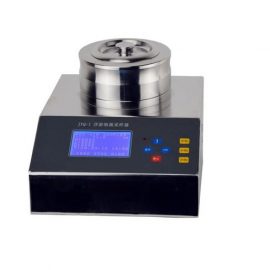
# Microbial Air Sampler: A Comprehensive Review of Applications and Advancements
## Introduction
Microbial air samplers have become indispensable tools in various fields, from healthcare to environmental monitoring. These devices play a crucial role in detecting and quantifying airborne microorganisms, providing valuable insights into air quality and potential health risks. This article delves into the applications and recent advancements in microbial air sampling technology.
## Understanding Microbial Air Samplers
Microbial air samplers are specialized devices designed to collect and analyze airborne microorganisms, including bacteria, fungi, and viruses. They operate by drawing in a specific volume of air and capturing the microorganisms onto a collection medium, such as agar plates or filters. The collected samples are then incubated and analyzed to identify and quantify the microbial content.
### Types of Microbial Air Samplers
There are several types of microbial air samplers, each with its unique mechanism and application:
– Impaction Samplers: These samplers use a high-velocity air stream to impact microorganisms onto a solid surface, such as an agar plate.
– Filtration Samplers: These devices capture microorganisms by passing air through a filter, which traps the particles.
– Impinger Samplers: These samplers collect microorganisms by bubbling air through a liquid medium, which captures the particles.
– Electrostatic Precipitators: These use an electric field to charge and collect airborne particles onto a collection surface.
## Applications of Microbial Air Samplers
Microbial air samplers are utilized in a wide range of applications, each requiring specific sampling techniques and analysis methods.
### Healthcare Settings
In hospitals and clinics, microbial air samplers are used to monitor air quality and detect potential sources of infection. They help in identifying airborne pathogens that could lead to hospital-acquired infections (HAIs) and ensure compliance with hygiene standards.
### Environmental Monitoring
Environmental scientists use microbial air samplers to study the distribution and concentration of microorganisms in different environments. This includes monitoring air quality in urban areas, industrial sites, and natural habitats to assess the impact of human activities on microbial ecosystems.
### Food and Beverage Industry
In the food and beverage industry, maintaining a sterile environment is crucial to prevent contamination. Microbial air samplers are employed to monitor the air in production facilities, ensuring that the air quality meets the required standards for food safety.
### Pharmaceutical Industry
The pharmaceutical industry relies on microbial air samplers to maintain aseptic conditions in manufacturing areas. These devices help in detecting any microbial contamination that could compromise the quality and safety of pharmaceutical products.
## Recent Advancements in Microbial Air Sampling Technology
The field of microbial air sampling has seen significant advancements in recent years, driven by the need for more accurate, efficient, and user-friendly devices.
### Automation and Real-Time Monitoring
Modern microbial air samplers are increasingly incorporating automation and real-time monitoring capabilities. These features allow for continuous sampling and immediate analysis, providing instant feedback on air quality and microbial contamination levels.
### Enhanced Sensitivity and Specificity
Advancements in sensor technology and analytical methods have led to microbial air samplers with enhanced sensitivity and specificity. These improvements enable the detection of low concentrations of microorganisms and the identification of specific pathogens with greater accuracy.
### Portable and Compact Designs
The development of portable and compact microbial air samplers has expanded their applicability in field studies and remote locations. These devices are lightweight, easy to transport, and can operate on battery power, making them ideal for on-site monitoring.
### Integration with Data Analytics
The integration of microbial air samplers with data analytics platforms allows for the collection, storage, and analysis of large datasets. This integration facilitates trend analysis, predictive modeling, and the identification of potential contamination sources.
## Conclusion
Microbial air samplers are vital tools in ensuring air quality and safety across various industries. With ongoing advancements in technology, these devices are becoming more sophisticated, offering greater accuracy, efficiency, and ease of use. As the demand for microbial
Keyword: Microbial Air Sampler
